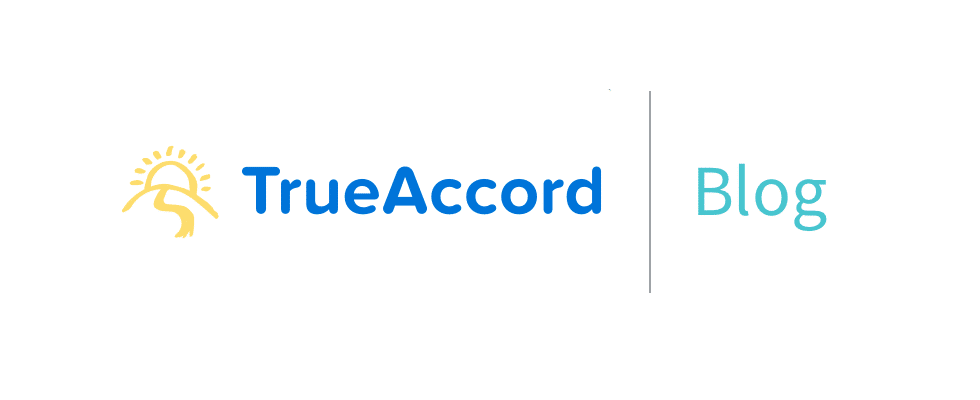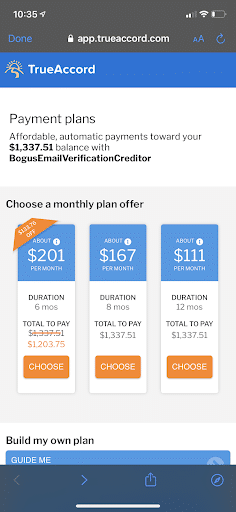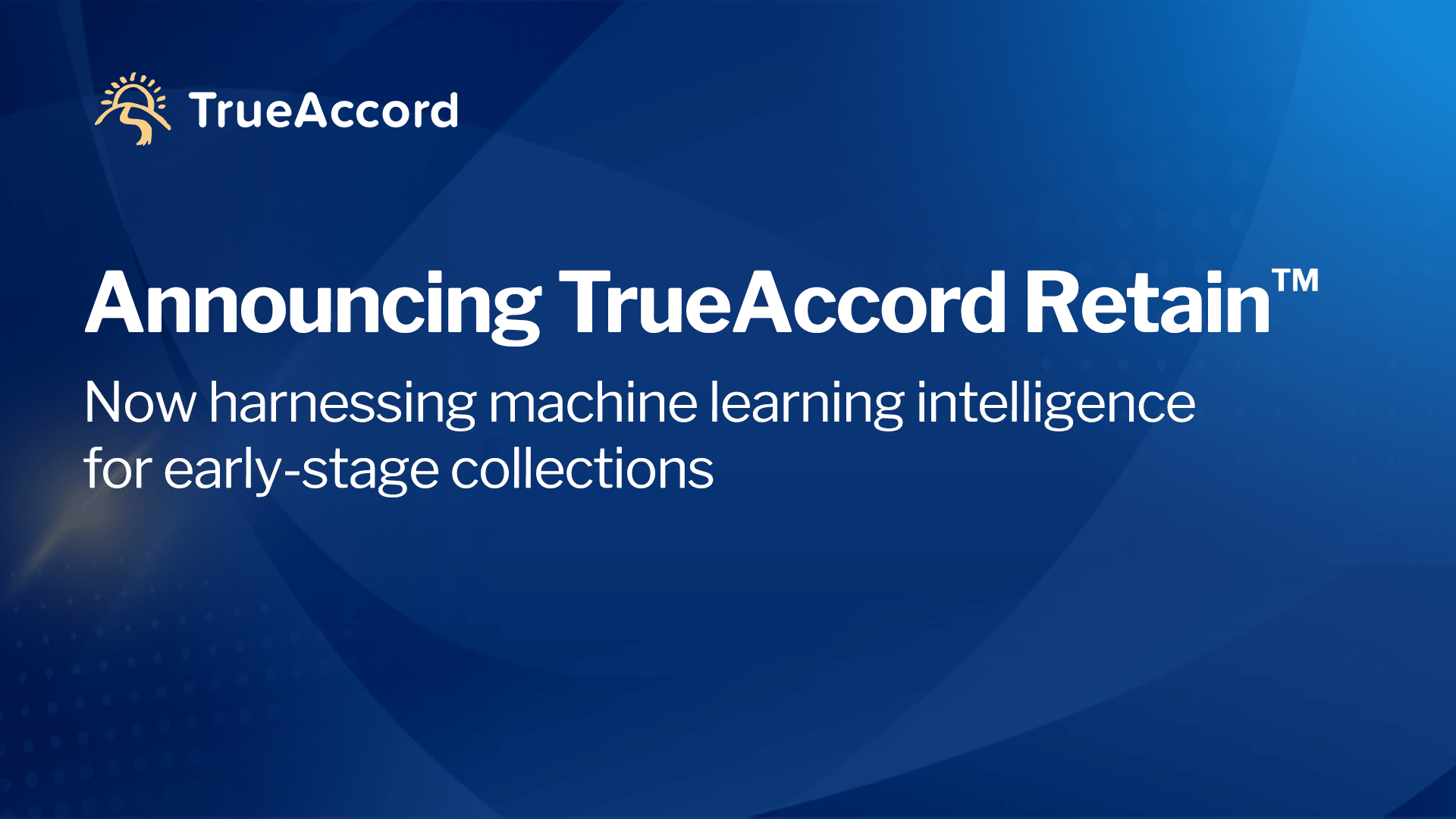
By Laura Marino
TrueAccord’s Chief Product Officer, Laura Marino, was recently featured in the New Standard in Debt Collection panel as part of the Beyond Digital: The Next Era in Collections summit. As a civil engineer turned product management executive, Laura has a unique viewpoint on the evolution of machine learning in software across a variety of industries. In this blog post, Laura shares her perspective on machine learning at TrueAccord and in collections, in general.
At TrueAccord, we know that consumers prefer digital channels and self-service. We also know that just providing the digital channels is not enough. To truly engage with consumers we need to help them throughout the journey. This is where machine learning comes in.
What is machine learning?
Machine learning is an application of artificial intelligence (AI) that provides systems the ability to automatically learn and improve from experience without being explicitly programmed. In the context of collections, and specifically in the context of our consumer-centric approach to collections, machine learning is a wonderful tool to personalize the experience for each consumer, effectively engage with each of them, and ultimately help resolve their debt.
There has been so much hype around machine learning, but often companies that claim to do ML are really using fixed rules or heuristics (if a consumer does X, then do Y) without including any of the automatic learning and improvement. Or they may be using ML for a very specific, very limited scope – like automating some consumer support responses. The reason that leveraging ML is so difficult for something as complex as collections and recovery is that it requires a lot of expertise in data science and behavioral science, it requires a lot of user research, and it requires a lot of data. This is not something that a company can decide to start doing overnight as an add-on.
How does TrueAccord apply machine learning to debt collection?
TrueAccord is leveraging machine learning and behavioral science throughout the entire journey, from initial engagement all the way to resolution. We were built specifically around the hypothesis that focusing on machine learning-driven, digital-first experiences was the way to transform debt collections. We have been doing this since 2013, and we have orders of magnitude more data than anyone else. Just to give you an idea: we send millions of emails per day, and hundreds of thousands of text messages per week and our ML engine learns from every open, every click, every action on our website, and every interaction with our call center agents. Because of all of this, we have something that is very hard for anyone to imitate.
Unlike traditional collections, we do not use demographic data like age, zip code, or creditworthiness to personalize the experience. Instead, we use engagement data about how the consumer responds at every step in the process.
We have handled debts for over 24 million consumers and we have collected data about each individual interaction with those consumers. That wealth of data, combined with our ongoing user research is behind the ability of Heartbeat (our fully automated and reactive decision engine) to personalize the experience for each consumer. We’ve seen this data-driven machine learning customer-centric approach lead to increased customer satisfaction, better repayment rates, and lower complaint rates.
Machine learning is used to personalize and optimize every step of the customer journey. The first thing we need to do is to effectively engage with the consumer. For that we have several models:
- Cadence optimizer: determines the right cadence to communicate with each consumer about their debt. Specifically, it determines which day to send the next communication. We don’t have a fixed rule that says “send an email every x days.” Our decision engine decides it dynamically based on the type of debt, the consumer behavior, and where they are in the process.
- Send time optimizer: determines when during that day, communication should go out. A working mother who is busy with her kids in the morning and in the evening is more likely to check her messages in the middle of the day during her lunch break. A construction worker has a very early start to their day, may prefer to check messages at the end of the day. We want our consumers to receive our communications during their preferred times so that they are at the top of their inbox and not buried under 50 other emails. Reaching people at the right time of day has a big impact. Due to our send time optimizer, we saw a 23% increase in liquidation for certain types of debts.
- Email content rater: we also want to make sure that the tone of our communication is one that will best resonate with a specific consumer. For each piece of content we send out, our content team has created multiple versions with different voices, ranging from very empathetic to more ‘to the point’ because different people respond to different styles. Heartbeat chooses which one to send based on what it has learned from the behavior of each consumer.
After engaging the consumer with the right cadence, timing, and content we want to make sure that they commit to a payment plan and stick to it until their debt is resolved. For that, we have machine learning models that determine the best combination of discount and length of payment plans to offer to each consumer. The options that the consumer sees when they get to the payment plan page are tailored to them based on what Heartbeat believes will work best. The consumers can build their own plan but, if we can proactively offer options that work, we make it easier.

We also have a ‘payment plan breakage model’ that helps us identify consumers who are at risk of not making a payment so that we can proactively reach out to them and give them options. With this we were able to increase the resolution rate among customers at risk by 35%.
What do customers think about TrueAccord’s model?
We have a lot of very positive feedback from our consumers which I attribute very much to our machine learning capabilities. It is one of the things that I think is so exciting for everybody who works at TrueAccord. We consistently get messages saying, “Thank you for making it so easy. Thank you for allowing me to do it via digital channels without having to talk to anybody.” And then when people call with questions, our call center knows that they’re there to help. People definitely respond very positively to the approach we’re taking to collections.
This content originally appeared as part of the Beyond Digital: The Next Era in Collections summit. Watch the entire summit here.








